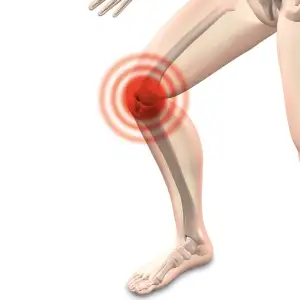Unveiling the Hidden Dangers: Exploring the Potential Health Risks of Air Fryers

- Understanding the concept of air frying and its popularity
- Exploring the concerns surrounding the release of toxic chemicals
- Discussing the potential dangers of acrylamide formation in air-fried foods
- Highlighting the risks associated with consuming excessive amounts of fried foods
- Providing tips to minimize health risks while using an air fryer
- Exploring alternative cooking methods for healthier food preparation
Air fryers have gained immense popularity in recent years as a healthier alternative to traditional deep frying. However, there are concerns about the potential health risks associated with using these appliances. While air frying may reduce the amount of oil used in cooking, it does not eliminate all risks. In this article, we will explore the hidden dangers of air fryers and discuss ways to minimize potential health risks while enjoying your favorite fried foods.
Understanding the concept of air frying and its popularity
Air frying is a cooking method that has gained immense popularity in recent years. It involves using hot air circulation to cook food, similar to convection ovens. The concept behind air frying is to achieve a crispy texture and golden brown color without the need for excessive oil. This makes it an attractive option for those looking to reduce their fat intake and make healthier food choices. Air fryers have become a staple in many kitchens due to their convenience, versatility, and ability to mimic the taste and texture of deep-fried foods.
Exploring the concerns surrounding the release of toxic chemicals
One of the concerns surrounding air fryers is the potential release of toxic chemicals during the cooking process. When food is cooked at high temperatures, especially in an enclosed space like an air fryer, there is a risk of certain chemicals being released into the air and subsequently ingested by individuals.
One such chemical is acrylamide, which forms when starchy foods are cooked at high temperatures. Acrylamide has been classified as a potential carcinogen by the International Agency for Research on Cancer (IARC). It is formed through a reaction between sugars and an amino acid called asparagine, which are naturally present in many types of food.
In traditional deep frying methods, acrylamide formation can be minimized by using fresh oil and not overcooking the food. However, with air frying, where little to no oil is used, there is still a risk of acrylamide formation due to the high temperatures involved.
Another concern is the release of volatile organic compounds (VOCs) during cooking. VOCs are chemicals that can evaporate into the air at room temperature and may have adverse health effects when inhaled or ingested. While studies on VOCs released from air fryers are limited, it's important to be aware of their potential presence and take necessary precautions.
To mitigate these concerns, it's recommended to follow proper cooking guidelines provided by manufacturers, such as avoiding overcooking or burning food. Additionally, it's advisable to cook in well-ventilated areas to minimize exposure to any potential toxic fumes.
While further research is needed to fully understand the extent of these risks associated with air fryers, it's important for individuals to be mindful of their cooking practices and make informed decisions about their food preparation methods.
Discussing the potential dangers of acrylamide formation in air-fried foods
Acrylamide formation is a major concern when it comes to air-fried foods. Acrylamide is a chemical that forms when certain starchy foods are cooked at high temperatures, such as frying or baking. It is known to be a potential carcinogen and has been linked to an increased risk of cancer in animal studies.
When foods like potatoes or bread are subjected to high heat during the air frying process, the naturally occurring sugars and amino acids react to form acrylamide. This chemical can also be found in other fried or baked foods like potato chips, French fries, and even coffee.
Consuming excessive amounts of acrylamide can pose health risks. Studies have shown that long-term exposure to high levels of acrylamide may increase the risk of developing certain types of cancer, including kidney, ovarian, and endometrial cancer.
While the exact level of risk from consuming acrylamide in food is still being studied, it is important to be mindful of its potential dangers. To minimize your exposure to acrylamide when using an air fryer, consider cooking at lower temperatures or for shorter durations. Pre-soaking potatoes before cooking can also help reduce acrylamide formation.
Additionally, it's important to maintain a balanced diet and not rely solely on air-fried foods as a healthier alternative. Incorporating a variety of cooking methods like steaming, boiling, or grilling can help diversify your nutrient intake while reducing the risks associated with excessive consumption of fried foods.
In conclusion, while air fryers offer a convenient way to enjoy crispy and fried-like dishes with less oil, it's crucial to understand and address the potential health risks associated with their use. By being aware of acrylamide formation and practicing moderation in our food choices, we can continue to enjoy delicious meals while prioritizing our health and well-being.
Highlighting the risks associated with consuming excessive amounts of fried foods
Consuming excessive amounts of fried foods, whether prepared in an air fryer or traditional deep-frying methods, can pose several health risks. Firstly, fried foods are typically high in calories, unhealthy fats, and sodium, which can contribute to weight gain and increase the risk of obesity. This can lead to various health problems such as heart disease, diabetes, and certain types of cancer. Additionally, frequent consumption of fried foods has been linked to an increased risk of developing high blood pressure and elevated cholesterol levels. It is important to be mindful of portion sizes and incorporate a variety of healthier cooking methods into your diet to minimize these risks.
Providing tips to minimize health risks while using an air fryer
To minimize health risks while using an air fryer, follow these tips:
1. Choose healthier ingredients: Opt for fresh and whole foods like fruits, vegetables, lean meats, and seafood. Avoid processed or pre-packaged foods that may contain unhealthy additives.
2. Use minimal oil: While air frying requires less oil than traditional frying methods, it's still important to use it sparingly. Use a spray bottle to lightly coat the food with oil instead of submerging it.
3. Avoid high-fat oils: Opt for healthier oils like olive oil or avocado oil, which have a higher smoke point and are less likely to release harmful chemicals when heated.
4. Preheat the air fryer: Preheating helps to ensure even cooking and reduces the risk of undercooked food. Follow the manufacturer's instructions for preheating time and temperature.
5. Don't overcrowd the basket: Overcrowding can lead to uneven cooking and may result in undercooked or burnt food. Leave enough space between each piece of food for proper airflow.
6. Flip or shake the food: To promote even browning, flip or shake the food halfway through the cooking process. This will help prevent any areas from becoming overly crispy or burnt.
7. Monitor cooking time: Keep a close eye on your food while it's cooking to avoid overcooking or burning. Adjust the cooking time as needed based on your preferences and the specific recipe.
8. Clean regularly: Regularly clean your air fryer according to the manufacturer's instructions to prevent build-up of grease and residue that can affect its performance and potentially pose health risks.
By following these tips, you can enjoy delicious air-fried meals while minimizing potential health risks associated with this popular cooking method. Remember, moderation is key in maintaining a balanced diet and overall well-being.
Exploring alternative cooking methods for healthier food preparation
While air frying has gained popularity for its ability to produce crispy and delicious foods, it's important to consider alternative cooking methods for a healthier approach. Steaming is one such method that retains the natural flavors and nutrients of food without the need for excessive oil. Boiling, grilling, and baking are also great options that can help reduce the intake of unhealthy fats.
Steaming vegetables not only preserves their vibrant colors but also ensures that essential vitamins and minerals remain intact. Grilling meats allows excess fat to drip away, resulting in a leaner and healthier dish. Baking is another excellent option as it requires minimal oil while still achieving a crispy texture.
By exploring these alternative cooking methods, you can enjoy flavorful meals without compromising your health. Remember to experiment with different seasonings and spices to enhance the taste of your dishes. Ultimately, finding a balance between indulgence and nutrition is key to maintaining a healthy lifestyle.
In conclusion, while air fryers have gained popularity for their ability to cook crispy and delicious foods with minimal oil, it is important to be aware of the potential health risks associated with their use. The release of toxic chemicals and the formation of acrylamide in air-fried foods are concerns that should not be ignored.
However, it is crucial to remember that moderation and balance are key when it comes to food choices. Enjoying air-fried foods occasionally as part of a well-rounded diet can still be a part of a healthy lifestyle. It is also advisable to incorporate other cooking methods such as baking, grilling, or steaming into your routine for healthier food preparation.
Ultimately, being mindful of the risks and making informed choices can help you minimize any potential health hazards while still indulging in the occasional crispy treat. So go ahead and enjoy your air fryer creations, but always remember to prioritize moderation and balance in your overall food choices for optimal health.
Published: 14. 01. 2024
Category: Health



